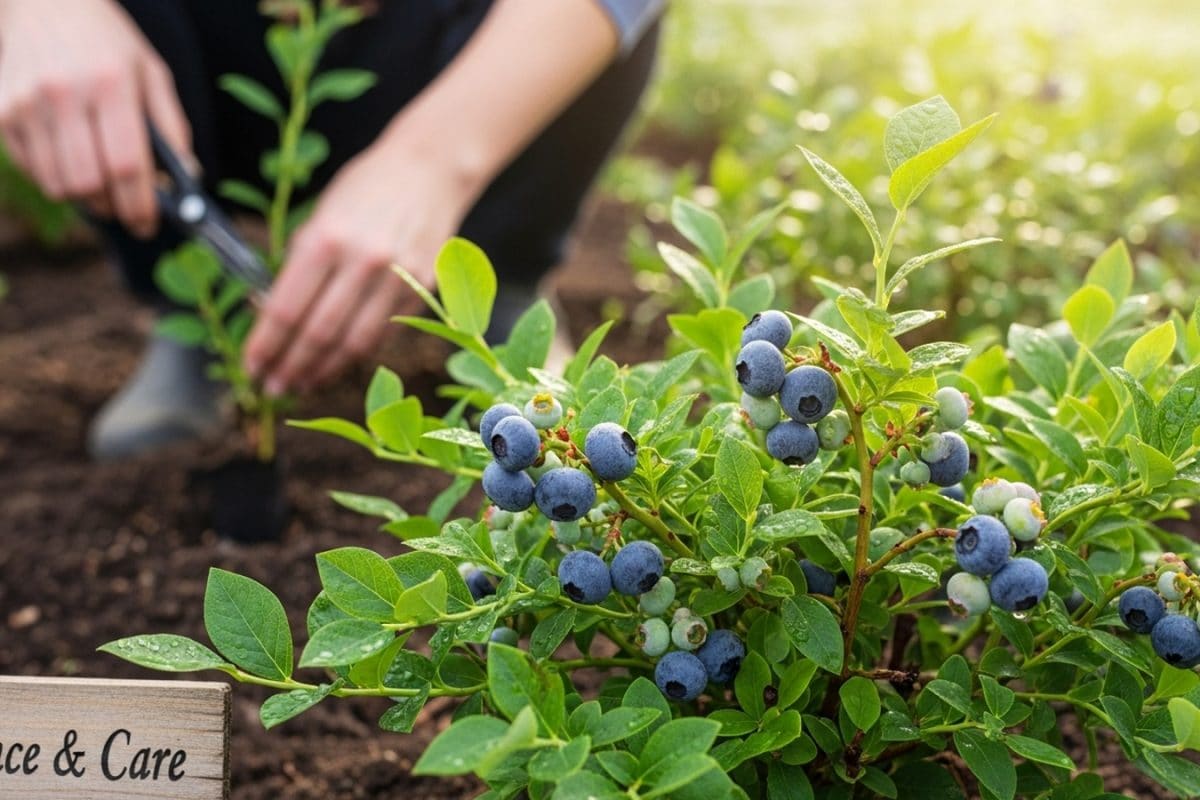Business
Discover How to Successfully Grow Blueberries on Your Balcony

Growing blueberries on a balcony is not only feasible but also highly rewarding. With the right techniques and care, anyone can cultivate these antioxidant-rich berries in limited spaces, transforming their balconies into productive gardens.
Understanding Blueberry Requirements
To successfully grow blueberries, a few critical requirements must be met. Firstly, the choice of container is essential. Blueberries thrive in pots that are at least 30 centimeters deep. This depth allows for sufficient root development and drainage, which is vital for the health of the plant.
The soil used for planting blueberries also plays a significant role. These plants prefer acidic soil with a pH level between 4.5 and 5.5. Using a mixture specifically designed for acid-loving plants is advisable. Many gardening centers offer pre-mixed soils tailored for blueberries, ensuring that the plants receive the nutrients they need for optimal growth.
Sunlight and Watering Needs
Sunlight is another critical factor in successful blueberry cultivation. Blueberries require at least six hours of direct sunlight each day. Balconies that face south or west are ideal, as they provide the necessary light exposure. If sunlight is limited, consider using reflective materials to enhance light availability.
Watering blueberries requires a careful balance. The soil should be kept consistently moist but not waterlogged. Regular checks are needed to ensure that the soil is damp, particularly during the warmer months. Over-watering can lead to root rot, so it’s essential to monitor soil moisture levels closely.
Fertilization and Pest Management
Fertilizing blueberry plants is crucial for their development. A slow-release fertilizer formulated for acid-loving plants can promote healthy growth and fruit production. It is best to apply this during the early spring, just as new growth begins.
Pest management is another vital aspect of balcony blueberry gardening. Common pests include aphids and spider mites. Regularly inspecting plants and using organic insecticides can help manage these pests effectively. Additionally, introducing beneficial insects, such as ladybugs, can provide a natural solution to pest problems.
Harvesting Your Blueberries
The harvesting season for blueberries typically begins in mid-summer, around July in many regions. Fruits should be picked when they are fully ripe, indicated by a deep blue color. The berries will easily detach from the plant when they are ready, making harvesting a straightforward process.
With proper care, balcony-grown blueberries can yield several kilograms of fruit each year. This not only provides a fresh and nutritious source of food but also enhances the aesthetic appeal of the living space.
Growing blueberries on a balcony exemplifies how limited spaces can still support fruitful gardening endeavors. With the right approach, anyone can enjoy the benefits of homegrown blueberries, enriching their diets and enhancing their surroundings.
-

 World4 months ago
World4 months agoSBI Announces QIP Floor Price at ₹811.05 Per Share
-

 Lifestyle4 months ago
Lifestyle4 months agoCept Unveils ₹3.1 Crore Urban Mobility Plan for Sustainable Growth
-

 Science3 months ago
Science3 months agoNew Blood Group Discovered in South Indian Woman at Rotary Centre
-

 Sports3 months ago
Sports3 months agoBroad Advocates for Bowling Change Ahead of Final Test Against India
-

 World4 months ago
World4 months agoTorrential Rains Cause Flash Flooding in New York and New Jersey
-

 Top Stories4 months ago
Top Stories4 months agoKonkani Cultural Organisation to Host Pearl Jubilee in Abu Dhabi
-

 Science4 months ago
Science4 months agoNothing Headphone 1 Review: A Bold Contender in Audio Design
-

 Top Stories4 months ago
Top Stories4 months agoAir India Crash Investigation Highlights Boeing Fuel Switch Concerns
-

 Sports3 months ago
Sports3 months agoCristian Totti Retires at 19: Pressure of Fame Takes Toll
-

 Business4 months ago
Business4 months agoIndian Stock Market Rebounds: Sensex and Nifty Rise After Four-Day Decline
-

 Politics4 months ago
Politics4 months agoAbandoned Doberman Finds New Home After Journey to Prague
-

 Top Stories4 months ago
Top Stories4 months agoPatna Bank Manager Abhishek Varun Found Dead in Well









